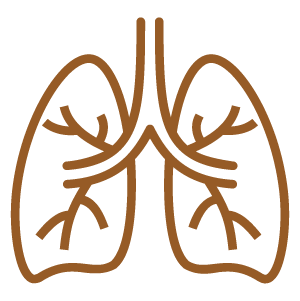References
Acharya, S. K., Dasarathy, S., Tandon, A., Joshi, Y. K., & Tandon, B. N. (1993). A preliminary open trial on interferon stimulator (SNMC) derived from Glycyrrhiza glabra in the treatment of subacute hepatic failure. Indian Journal of Medical Research, 98, 69-74. PMID: 8344734. https://pubmed.ncbi.nlm.nih.gov/8344734/
Barnes, J., Anderson, L.A., & Phillipson, J.D. (2007). Herbal medicines (3rd ed.). Pharmaceutical Press.
Buhner, S. H. (2013). Herbal Antivirals: Natural Remedies for Emerging & Resistant Viral Infections. Storey Publishing.
Fiore, C., Eisenhut, M., Ragazzi, E., Zanchin, G., & Armanini, D. (2005). A history of the therapeutic use of liquorice in Europe. Journal of Ethnopharmacology, 99(3), 317-324. https://doi.org/10.1016/j.jep.2005.04.015
Fiore, C., Eisenhut, M., Krausse, R., Ragazzi, E., Pellati, D., Armanini, D., & Bielenberg, J. (2007). Antiviral effects of Glycyrrhiza species. Phytotherapy Research, 22(2), 141-148. https://doi.org/10.1002/ptr.2295
Hoffmann, D. (2003). Medical herbalism: The science and practice of herbal medicine. Healing Arts Press.
Makino, T. (2021). Exploration for the real causative agents of liquorice-induced pseudoaldosteronism. Journal of Natural Medicines, 75(2), 275–283. https://doi.org/10.1007/s11418-021-01484-3
Martin, M. D., Sherman, J., van der Ven, P., & Burgess, J. (2008). A controlled trial of a dissolving oral patch concerning glycyrrhiza (liquorice) herbal extract for the treatment of aphthous ulcers. General Dentistry, 56(2), 206-210. https://pubmed.ncbi.nlm.nih.gov/18348383/
McIntyre, A. (2019). The complete herbal tutor. Aeon.
Rauf, A., Akram, M., Semwal, P., Mujawah, A. A. H., Muhammad, N., Riaz, Z., Munir, N., Piotrovsky, D., Vdovina, I., Bouyahya, A., Adetunji, C. O., Shariati, M. A., Almarhoon, Z. M., Mabkhot, Y. N., & Khan, H. (2021). Antispasmodic Potential of Medicinal Plants: A Comprehensive Review. Oxidative Medicine and Cellular Longevity, 2021, 4889719. https://doi.org/10.1155/2021/4889719. PMCID: PMC8601825.
Raveendra, K. R., Srinivasa, V. J., Sushma, K. R., Allan, J. J., Goudar, K. S., Shivaprasad, H. N., Venkateshwarlu, K., Geetharani, P., Sushma, G., & Agarwal, A. (2012). An extract of Glycyrrhiza glabra (GutGard) alleviates symptoms of functional dyspepsia: A randomized, double-blind, placebo-controlled study. Evidence-Based Complementary and Alternative Medicine, 2012, Article 216970. https://doi.org/10.1155/2012/216970
Romm, A. (2017). Botanical medicine for women’s health. Elsevier Health Sciences.
Ruetzler, K., Fleck, M., Nabecker, S., Pinter, K., Landskron, G., Lassnigg, A., You, J., & Sessler, D. I. (2013). A randomized, double-blind comparison of liquorice versus sugar-water gargle for prevention of postoperative sore throat and postextubation coughing. Anesthesia & Analgesia, 117(3), 614-621. https://doi.org/10.1213/ANE.0b013e318299a650
Tominaga, Y., Nakagawa, K., Mae, T., Kitano, M., Yokota, S., Arai, T., Ikematsu, H., & Inoue, S. (2009). liquorice flavonoid oil reduces total body fat and visceral fat in overweight subjects: A randomized, double-blind, placebo-controlled study. Obesity Research & Clinical Practice, 3(3), I-IV. https://doi.org/10.1016/j.orcp.2009.04.005

















